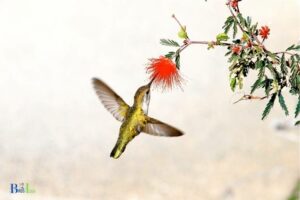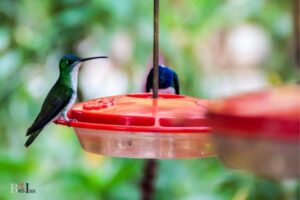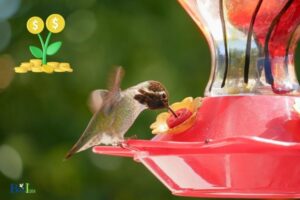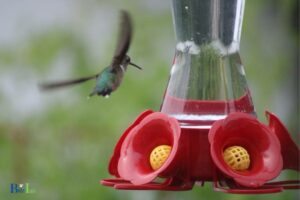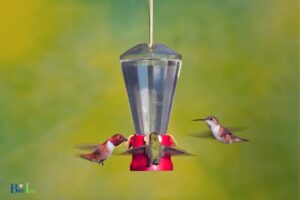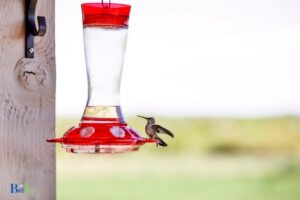Do Hummingbirds Come Back to the Same Feeder: Yes!
Yes, hummingbirds come back to the same feeder year after year, as they have excellent memory and can remember the locations of their food sources.
Hummingbirds are known for their extraordinary memory and navigational skills, which help them return to the same feeders, flowers, and nesting areas each year.
They can remember the exact location of a feeder from the previous year and will often return to that spot to refuel and find food.
Having a consistent and reliable food source in your yard will increase the chances of hummingbirds returning to the same feeder.
To encourage this behavior, be sure to maintain a clean and well-stocked feeder throughout the year, and especially during migration season.
Timely cleaning and refilling the feeder will not only attract hummingbirds but also ensure their health and well-being, making your yard a favorable stop for these tiny creatures.
4 Questions: About Hummingbirds Come Back to the Same Feeder
| Question | Answer |
| Do hummingbirds come back to the same feeder? | Yes |
| Reasons for coming back | Familiarity, consistency in food availability, territorial behavior |
| Factors influencing feeder preference | Feeder location, nectar quality, feeder cleanliness, competition from other birds |
| How to encourage return visits | Regular cleaning, providing fresh nectar, multiple feeders, adding perching spots, planting flowers nearby |
Key Takeaway
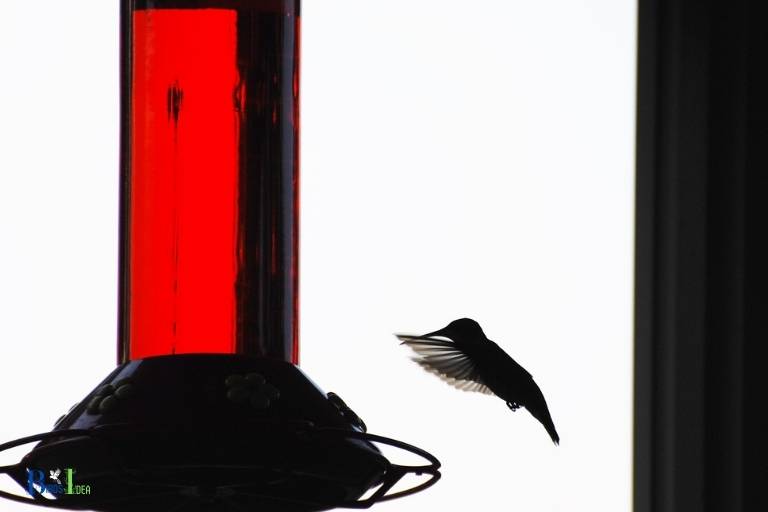
Five Facts About: Hummingbirds Come Back to the Same Feeder
The Fascinating Migration Pattern Of Hummingbirds
Hummingbirds are known for their small size, iridescent feathers, and quick wing flapping. They are found only in the americas, from alaska to tierra del fuego, but not all hummingbirds migrate.
The question is, do hummingbirds come back to the same feeder?
Let’s delve into the migration pattern of hummingbirds and discover how they embark on their journey and find their way back.
The American Species Of Hummingbirds: Overview
Hummingbirds are fascinating creatures, and the americas host many different species of them. North america has the ruby-throated hummingbird, rufous hummingbird, black-chinned hummingbird, and calliope hummingbird.
Central America has the violet-crowned hummingbird, costa’s hummingbird, and many more. South America has even more species, such as the giant hummingbird, white-necked Jacobin, and long-tailed sylph.
The Migratory Passage Of Hummingbirds: How They Embark On Their Journey
Hummingbirds migrate to breed in the north during the summer months and return to warmer climates in the south for the winter.
The ruby-throated hummingbird, for example, travels across the gulf of mexico to reach central america, a non-stop flight of 500 miles.
These tiny birds can increase their body mass by 100% in preparation for the journey. Males go ahead of the females to establish territories, and both will mate before the return journey.
The Navigational Techniques Of Hummingbirds: How They Find Their Way Back
Hummingbirds have an excellent memory and sharp vision that aids their navigation. They rely on remembering landmarks, such as rivers or mountains. They also use the position of the sun and the stars.
Some experts believe that the earth’s magnetic field also plays a significant role in helping hummingbirds find their way back.
They use their brain’s ability to detect magnetism to find the way.
Hummingbirds are remarkable creatures. Their migration journeys are nothing short of amazing. To attract them, make sure to keep your feeders clean and replace the nectar regularly.
Don’t forget to factor in your hummingbird’s feeding schedule based on where you are.
This way, you may even encounter the same hummingbird year after year.
The Reason Why Hummingbirds Come Back To The Same Feeder
The Unique Feeding Behavior Of Hummingbirds: Overview
Hummingbirds are incredible birds with unique feeding behavior. They are known to visit feeders multiple times a day, but the most fascinating fact about them is that they return to the same feeders year after year.
The reason behind this unique behavior is their exceptional memory, which helps them locate food sources quickly and efficiently.
Here are a few key points to consider:
- A hummingbird’s memory is extraordinary, and it can remember food sources, feeder locations, and even specific perches.
- Hummingbirds can visit up to 1,000 flowers a day, and they can consume twice their body weight in nectar each day.
- They are highly territorial birds, and they will defend their feeding area from other hummingbirds.
The Advantages Of Returning To The Same Feeder Year After Year
Hummingbirds have a unique feeding behavior, and returning to the same feeder year after year has its advantages.
Here are some key points:
- Hummingbirds are creatures of habit, and returning to a proven food source is a way to conserve their energy while getting the nutrients they need.
- Returning to the same feeder allows them to establish a feeding territory and dominate that area, ensuring that they can gain access to the feeder whenever they need it.
- The feeder’s location is vital for hummingbirds, and returning to the same site year after year ensures that they can find the feeder quickly, even if it gets moved.
The Pros And Cons Of Multiple Feeders In The Same Territory
While having multiple feeders may seem like a good idea, it can have both advantages and disadvantages, as discussed below:
Pros:
- Multiple feeders can attract more hummingbirds to your yard and provide them with additional food sources.
- Hummingbirds are highly territorial, and having multiple feeders can prevent aggressive behavior towards a single feeder.
- If placed strategically, multiple feeders can allow more hummingbirds to feed without overcrowding one location.
Cons:
- Multiple feeders can attract more insects, including ants, bees, and wasps, which can pose a threat to hummingbirds.
- Having multiple feeders can cause fights among hummingbirds for access to the feeders, which can result in injuries or fatalities.
- If not adequately maintained, multiple feeders can become a breeding ground for bacteria and mold, which can be harmful to hummingbirds.
How To Attract Hummingbirds To Your Feeder
Hummingbirds are some of nature’s most delightful creatures to watch. Their wings beat so rapidly that they appear to be hovering.
Observing them feeding at a feeder can provide hours of entertainment. But, do hummingbirds come back to the same feeder?
The answer is absolutely yes! We’ll explore how to attract hummingbirds to your feeder by using various types of feeders, choosing the best feeder placement, and using the best homemade nectar recipe.
Types Of Feeders: An Overview
The type of feeder you choose plays a vital role in attracting hummingbirds.
Some popular types of hummingbird feeders include:
- Glass feeders with a circular perch at the bottom
- Inverted glass bottle feeders
- Dish or saucer feeders
- Perching feeder with a tray or dome
- Window-mounted feeder
Choosing The Best Feeder Placement: A Complete Guide
Aside from choosing the right feeder, the location of your feeder is crucial.
Here are some things to keep in mind when choosing the best feeder placement:
- Hummingbirds prefer feeders that are in a shaded area to keep nectar from going bad too quickly.
- Place feeders where you can easily see them so that you can enjoy watching the hummingbirds.
- Try to hang your feeder near bright, colorful plants. Hummingbirds are attracted to these colors and plants that produce many flowers.
- Keep your feeder at least 3 feet from any windows or glass surfaces to prevent hummingbirds from flying into them.
Nectar Recipe: What Is The Best Homemade Nectar Recipe For Hummingbirds?
Making the ideal nectar recipe to fill your feeder is easy. Simply mix four parts water and one part table sugar.
Here are some tips to keep in mind when making the nectar.
- Use natural, white table sugar.
- Do not put any food coloring, honey, artificial sweeteners, or brown sugar into the mixture.
- Boil the mixture for 2-3 minutes to dissolve the sugar and remove any impurities.
- Allow it to cool down before pouring it into the feeder.
- Clean and refill the feeder every 2-3 days to keep the nectar fresh.
Feeding hummingbirds can be an enjoyable and rewarding way to interact with nature. Use these tips to attract these delightful creatures to your feeder.
By using the right feeder, the best feeder placement, and a homemade nectar recipe, you’ll be able to enjoy hours of entertainment watching hummingbirds come back to feed at your feeder.
The Dos And Don’Ts Of Feeding Hummingbirds
The Dos And Don’Ts Of Hummingbird Feeding: An Overview
Feeding hummingbirds can be a rewarding experience, but it’s essential to do it correctly to ensure the wellbeing of your feathered visitors.
Here are some essential dos and don’ts to consider before setting up your hummingbird feeder:
Dos:
- Use a feeder designed explicitly for hummingbirds, with specially designed feeding ports that help prevent bees and wasps from accessing the nectar.
- Place the feeder away from windows to avoid bird collisions.
- Clean your feeder regularly with soap and water to prevent the growth of harmful bacteria.
- Use a solution of four parts water to one-part granulated sugar to replicate the nectar hummingbirds prefer.
- Change the nectar every two to three days, even when it appears not to have been touched.
Don’ts:
- Never use honey or artificial sweeteners as they could be harmful to hummingbirds.
- Don’t use red dye in the nectar, as it is unnecessary and could be harmful.
- Don’t leave your feeder up year-round, as it can be detrimental to hummingbirds’ health and migration patterns.
Potential Hazards Of Hummingbird Feeding: Protecting Your Bird Visitors
While it’s great to feed hummingbirds, it’s also essential to consider any possible risks.
Here are some common hazards to your avian visitors and how to prevent them:
Predators:
- Place the feeder high enough to discourage predators like cats and raccoons.
- Provide nearby cover, like shrubs or bushes, so the birds have a safe place to flee if threatened.
Disease:
- Clean your feeder regularly with soap and water.
- Avoid overcrowding at feeding time by placing multiple feeders 10-15 feet apart, so the birds have room to access the food without crowding each other.
Environmental factors:
- Don’t place your feeder in direct sunlight, as the sugary nectar can ferment and be harmful to the birds.
- During hot weather, change the nectar more frequently to prevent it from going bad.
Ethical Considerations Of Hummingbird Feeding: When To Stop Feeding And Other Important Tips
While feeding hummingbirds is enjoyable and beneficial for these beautiful birds, there are some ethical considerations to keep in mind:
When to stop feeding:
- Stop refilling your feeder two weeks after you’ve seen the last hummingbird of the season.
- Feeding birds artificially can affect their migration patterns, so it’s essential to encourage natural food sources throughout the year.
Other important tips:
- Don’t use pesticides or sprays near your hummingbird feeder to avoid exposing the birds to harmful chemicals.
- Be mindful of any other animals in the area that could be negatively affected by the feeder, such as bees, wasps, or ants.
- Watch out for territorial bird behavior, which can result in squabbles around the feeder. In such cases, consider placing multiple feeders to encourage sharing.
FAQ For Do Hummingbirds Come Back To The Same Feeder
Do Hummingbirds Remember Where They Feed?
How Often Should I Fill My Feeder During Hummingbird Season?
What Do I Put In My Hummingbird Feeder?
Is It Necessary To Clean The Hummingbird Feeder?
Conclusion
It is always fascinating to observe hummingbirds and their unique behaviors. If you’re wondering whether hummingbirds come back to the same feeder, the answer is yes!
Not only do these delightful little birds remember specific feeders, but they also have impeccable long-term memories and can recognize the same flower patches and gardens year after year.
By providing a consistent source of nectar, you can expect to see the same hummingbirds returning to your feeder time and time again.
To ensure that you’re doing your part to support these impressive creatures, make sure to clean your feeder regularly and refill it with fresh nectar frequently.
Watching hummingbirds at a feeder can be an incredibly rewarding experience, and by taking a few easy steps, you can attract these remarkable birds to your garden year after year.

